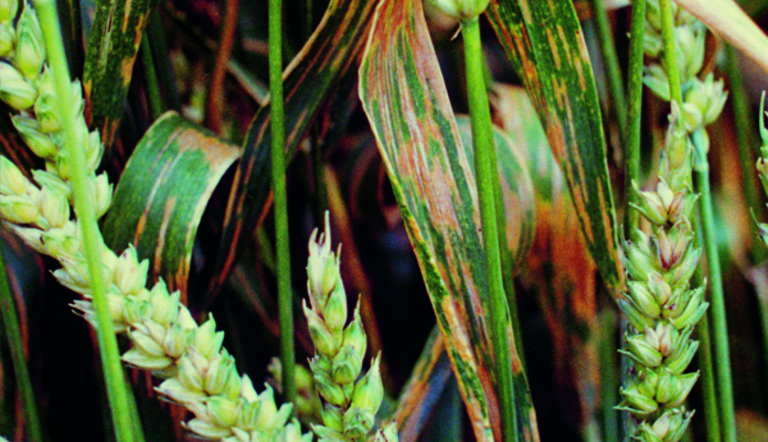
Pest Profile: Septoria Leaf Spot

IDENTIFICATION
Initial infections from Septoria leaf spot appear as small, light green-to-yellow spots between the veins of the lower leaves. These spots elongate to form irregular reddish-brown lesions. Embedded in these lesions are small, dark-brown to black fungal bodies (pycnidia) that can be seen with the use of a hand lens.
CONTROL TIPS
-
Ploughing down cereal residues and removing volunteer wheat will reduce the survivability of Septoria fungi and protect spring seeded wheat from infection.
-
Balanced fertility programs are important since high rates of fertilizer and early seeding may result in dense foliage going into the winter, which can increase disease levels. Septoria leaf spot may develop under snow cover in winter wheat.
-
Foliar-applied fungicides will reduce losses, but crops should be monitored closely around flag leaf emergence and sprayed when only small spots are present on upper leaves.
REGISTERED FUNGICIDES
Please read each label to determine which fungicide is appropriate for the crop affected.